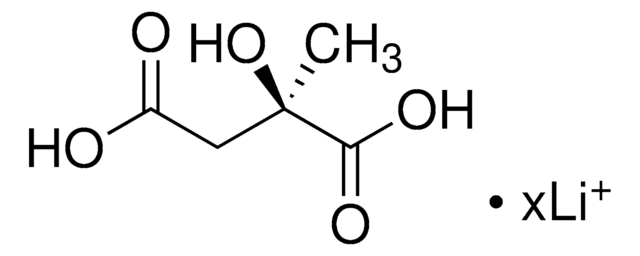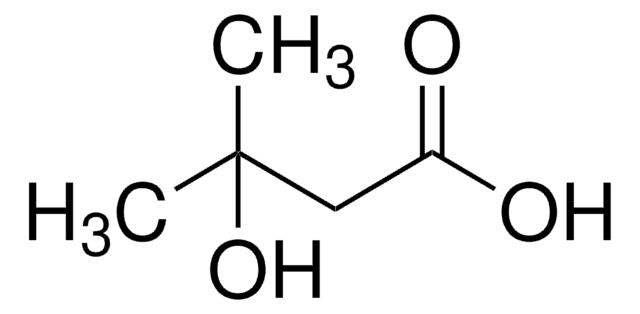44108
(E)-3-Methyl-glutaconsäure
≥97.0% (HPLC)
Synonym(e):
(2E)-3-Methyl-2-pentendisäure
About This Item
Empfohlene Produkte
Qualitätsniveau
Assay
≥97.0% (HPLC)
mp (Schmelzpunkt)
137-143 °C
Anwendung(en)
clinical testing
Format
neat
Lagertemp.
2-8°C
InChI
1S/C6H8O4/c1-4(2-5(7)8)3-6(9)10/h2H,3H2,1H3,(H,7,8)(H,9,10)/b4-2+
InChIKey
WKRBKYFIJPGYQC-DUXPYHPUSA-N
Verwandte Kategorien
Biochem./physiol. Wirkung
Signalwort
Warning
H-Sätze
Gefahreneinstufungen
Eye Irrit. 2 - Skin Irrit. 2
Lagerklassenschlüssel
11 - Combustible Solids
WGK
WGK 3
Flammpunkt (°F)
Not applicable
Flammpunkt (°C)
Not applicable
Choose from one of the most recent versions:
Analysenzertifikate (COA)
Don't see the Right Version?
If you require a particular version, you can look up a specific certificate by the Lot or Batch number.
Besitzen Sie dieses Produkt bereits?
In der Dokumentenbibliothek finden Sie die Dokumentation zu den Produkten, die Sie kürzlich erworben haben.
Unser Team von Wissenschaftlern verfügt über Erfahrung in allen Forschungsbereichen einschließlich Life Science, Materialwissenschaften, chemischer Synthese, Chromatographie, Analytik und vielen mehr..
Setzen Sie sich mit dem technischen Dienst in Verbindung.









